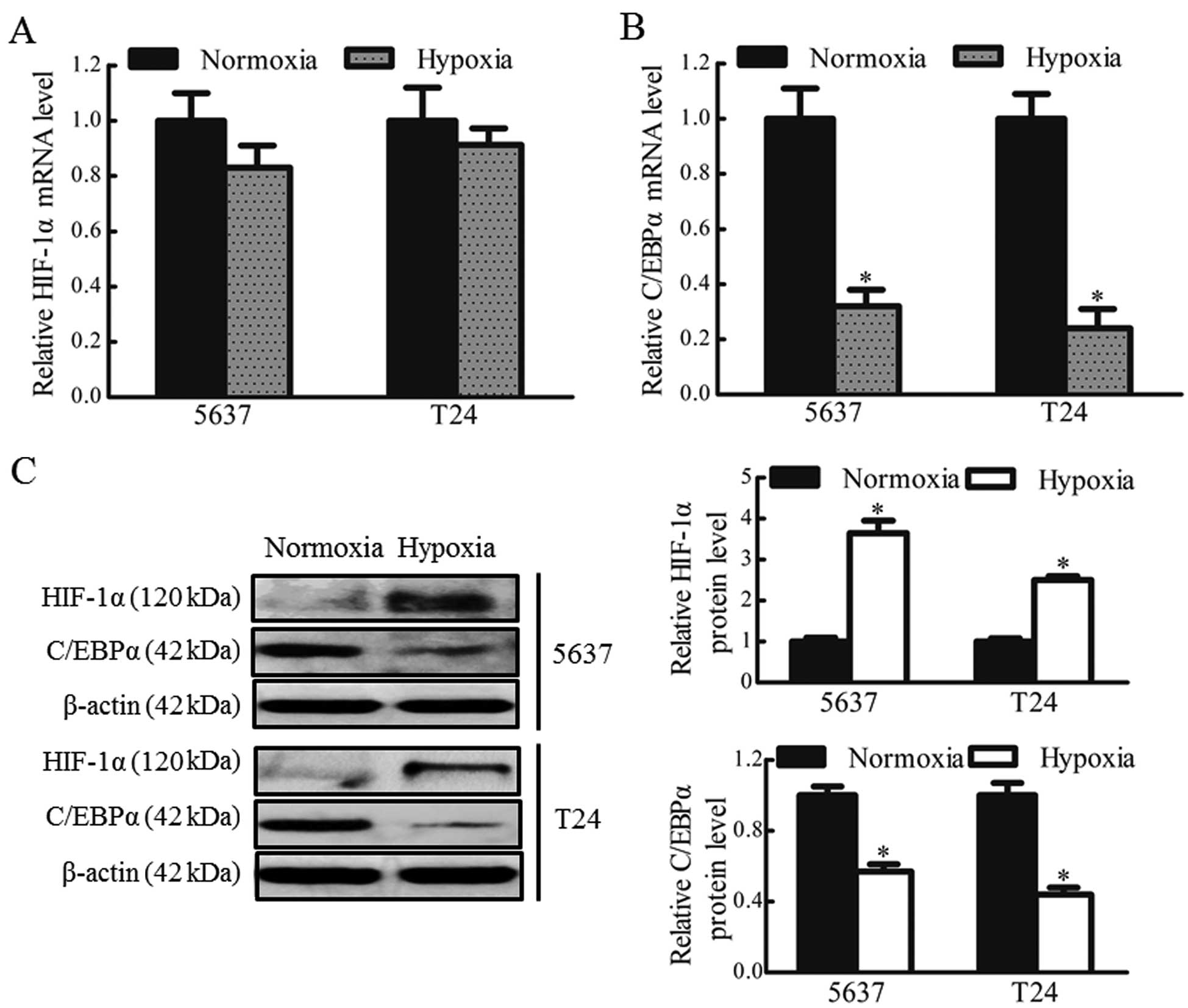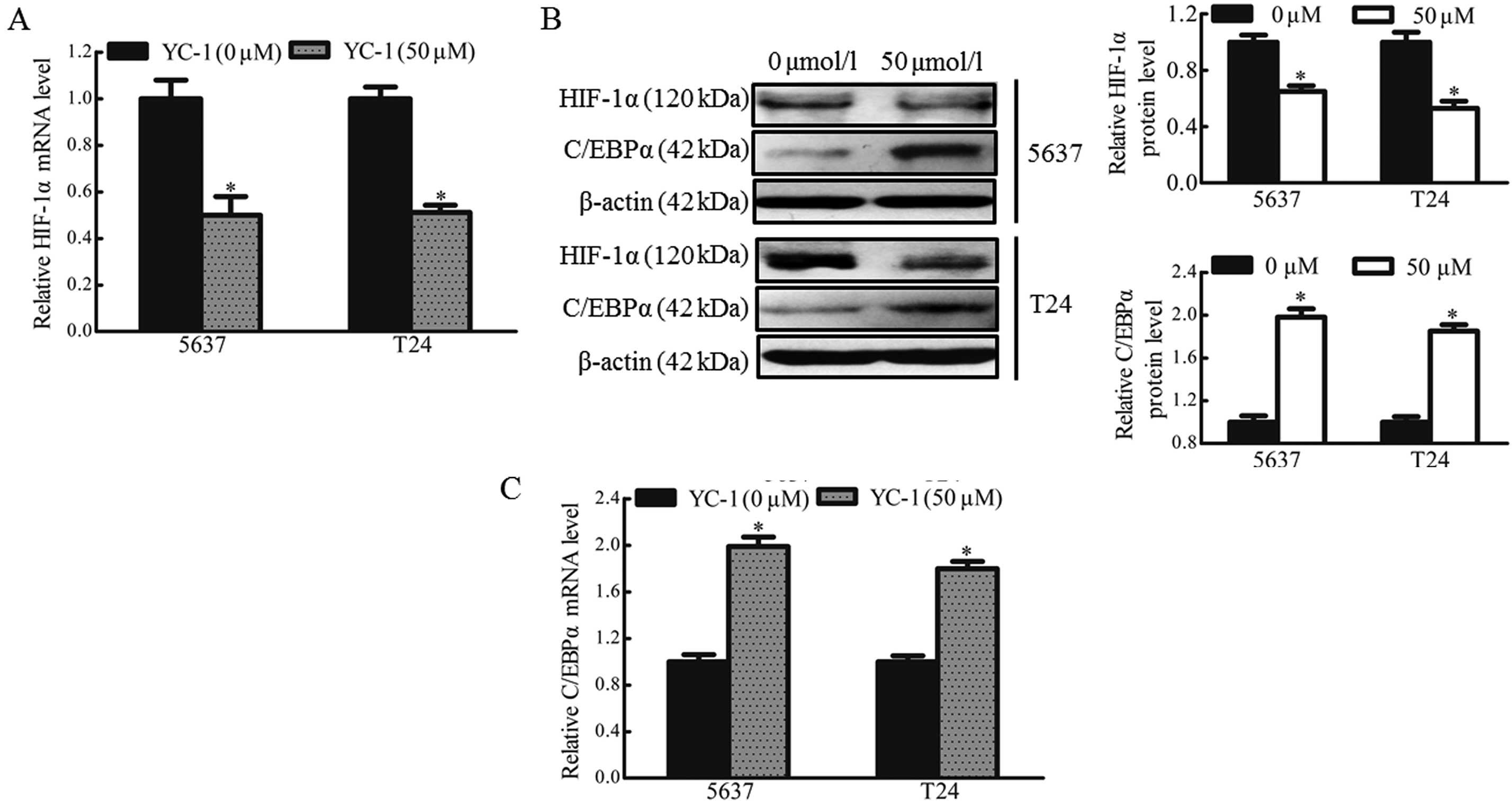|
1
|
Schuster MB and Porse BT: C/EBPalpha: a
tumour suppressor in multiple tissues? Biochim Biophys Acta.
1766:88–103. 2006.PubMed/NCBI
|
|
2
|
Lopez RG, Garcia-Silva S, Moore SJ,
Bereshchenko O, Martinez-Cruz AB, Ermakova O, Kurz E, Paramio JM
and Nerlov C: C/EBPalpha and beta couple interfollicular
keratinocyte proliferation arrest to commitment and terminal
differentiation. Nat Cell Biol. 11:1181–1190. 2009. View Article : Google Scholar : PubMed/NCBI
|
|
3
|
Pabst T, Mueller BU, Zhang P, Radomska HS,
Narravula S, Schnittger S, Behre G, Hiddemann W and Tenen DG:
Dominant-negative mutations of CEBPA, encoding CCAAT/enhancer
binding protein-alpha (C/EBPalpha), in acute myeloid leukemia. Nat
Genet. 27:263–270. 2001. View
Article : Google Scholar : PubMed/NCBI
|
|
4
|
Sato A, Yamada N, Ogawa Y and I kegami M:
CCAAT/enhancer-binding protein-α suppresses lung tumor development
in mice through the p38α MAP kinase pathway. PLoS One.
8:e570132013. View Article : Google Scholar
|
|
5
|
Gery S, Tanosaki S, Bose S, Bose N,
Vadgama J and Koeffler HP: Down-regulation and growth inhibitory
role of C/EBPalpha in breast cancer. Clin Cancer Res. 11:3184–3190.
2005. View Article : Google Scholar : PubMed/NCBI
|
|
6
|
Tseng HH, Hwang YH, Yeh KT, Chang JG, Chen
YL and Yu HS: Reduced expression of C/EBP alpha protein in
hepatocellular carcinoma is associated with advanced tumor stage
and shortened patient survival. J Cancer Res Clin Oncol.
135:241–247. 2009. View Article : Google Scholar
|
|
7
|
Bennett KL, Hackanson B, Smith LT,
Morrison CD, Lang JC, Schuller DE, Weber F, Eng C and Plass C:
Tumor suppressor activity of CCAAT/enhancer binding protein alpha
is epige-netically down-regulated in head and neck squamous cell
carcinoma. Cancer Res. 67:4657–4664. 2007. View Article : Google Scholar : PubMed/NCBI
|
|
8
|
Thompson EA, Zhu S, Hall JR, House JS,
Ranjan R, Burr JA, He YY, Owens DM and Smart RC: C/EBPα expression
is down-regulated in human nonmelanoma skin cancers and
inactivation of C/EBPα confers susceptibility to UVB-induced skin
squamous cell carcinomas. J Invest Dermatol. 131:1339–1346. 2011.
View Article : Google Scholar : PubMed/NCBI
|
|
9
|
Keith B and Simon MC: Hypoxia-inducible
factors, stem cells, and cancer. Cell. 129:465–472. 2007.
View Article : Google Scholar : PubMed/NCBI
|
|
10
|
Tickoo SK, Milowsky MI, Dhar N, Dudas ME,
Gallagher DJ, Al-Ahmadie H, Gopalan A, Fine SW, Ishill N, Bajorin
DF and Reuter VE: Hypoxia-inducible factor and mammalian target of
rapamycin pathway markers in urothelial carcinoma of the bladder:
possible therapeutic implications. Bju Int. 107:844–849. 2011.
View Article : Google Scholar
|
|
11
|
Majmundar AJ, Wong WJ and Simon MC:
Hypoxia-inducible factors and the response to hypoxic stress. Mol
Cell. 40:294–309. 2010. View Article : Google Scholar : PubMed/NCBI
|
|
12
|
Semenza GL: Targeting HIF-1 for cancer
therapy. Nat Rev Cancer. 3:721–732. 2003. View Article : Google Scholar : PubMed/NCBI
|
|
13
|
Chai CY, Chen WT, Hung WC, Kang WY, Huang
YC, Su YC and Yang CH: Hypoxia-inducible factor-1alpha expression
correlates with focal macrophage infiltration, angiogenesis and
unfavourable prognosis in urothelial carcinoma. J Clin Pathol.
61:658–664. 2008. View Article : Google Scholar
|
|
14
|
Zhang T, Fan J, Wu K, Zeng J, Sun K, Guan
Z, Wang X, Hiesh JT and He D: Roles of HIF-1α in a novel optical
orthotopic spontaneous metastatic bladder cancer animal model. Urol
Oncol. 30:928–935. 2012. View Article : Google Scholar : PubMed/NCBI
|
|
15
|
Li Y, Zhao X, Tang H, Zhong Z, Zhang L, Xu
R, Li S and Wang Y: Effects of YC-1 on hypoxia-inducible factor 1
alpha in hypoxic human bladder transitional carcinoma cell line T24
cells. Urol Int. 88:95–101. 2012. View Article : Google Scholar
|
|
16
|
Sun HL, Liu YN, Huang YT, Pan SL, Huang
DY, Guh JH, Lee FY, Kuo SC and Teng CM: YC-1 inhibits HIF-1
expression in prostate cancer cells: contribution of Akt/NF-kappaB
signaling to HIF-1alpha accumulation during hypoxia. Oncogene.
26:3941–3951. 2007. View Article : Google Scholar : PubMed/NCBI
|
|
17
|
Gospodarowicz M: Combination therapy:
hypoxia modification with radiotherapy for bladder cancer. Nat Rev
Clin Oncol. 8:129–130. 2011. View Article : Google Scholar : PubMed/NCBI
|
|
18
|
Choi SB, Park JB, Song TJ and Choi SY:
Molecular mechanism of HIF-1-independent VEGF expression in a
hepatocellular carcinoma cell line. Int J Mol Med. 28:449–454.
2011.PubMed/NCBI
|
|
19
|
Seifeddine R, Dreiem A, Blanc E,
Fulchignoni-Lataud MC, Le Frère Belda MA, Lecuru F, Mayi TH, Mazure
N, Favaudon V, Massaad C, et al: Hypoxia down-regulates
CCAAT/enhancer binding protein-alpha expression in breast cancer
cells. Cancer Res. 68:2158–2165. 2008. View Article : Google Scholar : PubMed/NCBI
|
|
20
|
Seifeddine R, Fulchignoni-Lataud MC and
Massaad-Massade L: Down-regulation of C/EBPα in breast cancer cells
by hypoxia-estrogen combination is mainly due to hypoxia.
Anticancer Res. 29:1227–1231. 2009.PubMed/NCBI
|
|
21
|
Timchenko NA, Harris TE, Wilde M, Bilyeu
TA, Burgess-Beusse BL, Finegold MJ and Darlington GJ:
CCAAT/enhancer binding protein alpha regulates p21 protein and
hepatocyte proliferation in newborn mice. Mol Cell Biol.
17:7353–7361. 1997.PubMed/NCBI
|
|
22
|
Timchenko NA, Wilde M, Nakanishi M, Smith
JR and Darlington GJ: CCAAT/enhancer-binding protein alpha (C/EBP
alpha) inhibits cell proliferation through the p21
(WAF-1/CIP-1/SDI-1) protein. Genes Dev. 10:804–815. 1996.
View Article : Google Scholar : PubMed/NCBI
|
|
23
|
Zaragoza K, Bégay V, Schuetz A, Heinemann
U and Leutz A: Repression of transcriptional activity of C/EBPalpha
by E2F-dimerization partner complexes. Mol Cell Biol. 30:2293–2304.
2010. View Article : Google Scholar : PubMed/NCBI
|
|
24
|
Yin H, Lowery M and Glass J: In prostate
cancer C/EBPalpha promotes cell growth by the loss of interactions
with CDK2, CDK4, and E2F and by activation of AKT. Prostate.
69:1001–1016. 2009. View Article : Google Scholar : PubMed/NCBI
|
|
25
|
Muller C, Calkhoven CF, Sha X and Leutz A:
The CCAAT enhancer-binding protein alpha (C/EBPalpha) requires a
SWI/SNF complex for proliferation arrest. J Biol Chem.
279:7353–7358. 2004. View Article : Google Scholar
|
|
26
|
Zhang J, Wilkinson JE, Gonit M, Keck R,
Selman S and Ratnam M: Expression and sub-cellular localization of
the CCAAT/enhancer binding protein α in relation to postnatal
development and malignancy of the prostate. Prostate. 68:1206–1214.
2008. View Article : Google Scholar : PubMed/NCBI
|
|
27
|
Kumagai T, Akagi T, Desmond JC, Kawamata
N, Gery S, Imai Y, Song JH, Gui D, Said J and Koeffler HP:
Epigenetic regulation and molecular characterization of C/EBPalpha
in pancreatic cancer cells. Int J Cancer. 124:827–833. 2009.
View Article : Google Scholar
|













